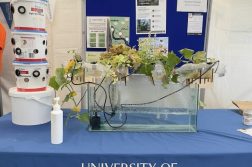In the increasingly globalised and digital era we find ourselves in, information is literally at our fingertips. Through the power of our electronic devices, we can effectively act as our own doctors using NHS symptom-finders, catch up with all the latest developments in science/technology and even study for accredited qualifications via distance-learning.
However, this high degree of connectivity provided by the Internet also brings the dangers of ‘fake news’ and other inaccurate postulations gaining enough traction such that they begin to influence public opinion. This has become increasingly apparent during the coronavirus pandemic; false claims about 5G’s role in the spread of the virus to Donald Trump’s potentially dangerous promotion of the antimalarial drug hydroxychloroquine and even drinking bleach (both theories debunked by the medical community) to ‘cure’ COVID-19 all gain hysteria through the internet.
It is important that we consider the most reliable sources available in order to be well-informed in such cases; anything less would be an abject waste of the increasing availability of information made possible by 21st century technology. With that in mind, let’s dive into some of the most notable (debunked) scientific conspiracy theories and ‘fake news’:
#1 – The MMR Vaccine Scare
In 1998, British doctor Andrew Wakefield and 12 co-authors published research in The Lancet, based on the cases of 12 patients, which proposed a link between the MMR jab and autism. Aided by campaigns launched by the Daily Mail and a lack of any scientific challenge to Wakefield’s ‘results’, this news would lead to a collapse in UK vaccination rates and the highest levels of nationwide measles cases seen for 20 years. It also brought the ‘anti-vaxx’ movement into prominence, which continues to plague public health efforts to this day.
In 2004, an investigation into Wakefield’s undisclosed financial interests in the case were made public, which found that when he warned parents to avoid MMR, and published research claiming a link with autism, he did not disclose he was being funded by solicitors seeking evidence to use against vaccine manufacturers. This, combined with follow-up studies disproving the MMR-ASD connection, prompted The Lancet to withdraw the original article, with 10 co-authors pulling their support for the interpretational section which had stated said link, and Wakefield himself losing his medical license.
#2 – The Peanut Butter Test
In 2013, a study was published in the Journal of Neurological Sciences that aimed to detect Alzheimer’s disease (the most common cause of dementia in elderly people) by measuring subjects’ ability to smell peanut butter through each nostril; a lack of ability to smell through the left nostril was postulated as stemming from dysfunction of olfactory nerves, one of the first to be targeted by dementia. It was hailed as a potential breakthrough in early diagnosis of Alzheimer’s but was criticised for for its small sample size used in the study. A subsequent investigation published in the same paper could not replicate the results, disproving the original study.
#3 – The Archaeoraptor Fossil
In 1999, the fossil of a feathered dinosaur was ‘discovered’ and named as an Archaeoraptor. It was hailed as the missing evolutionary link between modern birds and dinosaurs. Turns out, the ‘archaeoraptor’ was just a glued-together hodgepodge of fossils from different species. The head and upper body belonged to a type of primitive bird, the tail belonged to a small winged dinosaur, and the original owner of the legs and feet remains unknown.




